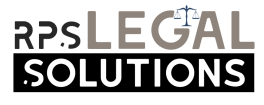Pros and Cons of Joining Moderate Political Organizations
While there are pros and cons of joining moderate political organizations, the debate over whether such groups are relevant has sparked much controversy. Moderates have lost much influence due to the political landscape and have been forced to join more extreme parties. Their incumbency has also limited their ability to draw on a national brand, a powerful tool for attracting financial resources. Also, they lack a distinct national brand from their party’s dominant, extremist one.
Moderate political organizations have largely abandoned the field.
In recent decades, the field of political organization has been dominated by extremes. In the Republican Party, the moderate political organizations have been largely ignored. While the broader public is on their side, moderates have felt disenfranchised by ideological poles. In the wake of the Rockefeller election, moderates have looked to restructure the field by relying on the financial resources of moderate donors. Today, however, this source of funding is dwindling.
The Democratic Party has a long tradition of supporting moderate candidates, and the recent election did not disappoint. A new “market liberal” faction has formed in New York, largely consisting of the Democratic Leadership Council. This faction has made strides in recent years, especially in suburban districts where Republican politicians have fallen victim to moderate Democrats. As a result, market liberals will likely face increasing pressure to create a factional brand that differentiates itself from the DSA wing.
Moderate political organizations rely on financial resources from moderate donors.
Political parties and candidate campaigns increasingly depend on financial resources from various sources, including largely moderate donors. However, this trend is counterbalanced by a growing number of contributions from partisans, issue groups, and labor unions. These groups tend to lean more to one extreme or another, which has implications for the nature of political parties. The political landscape is thus highly polarized, with many parties relying on moderate donors to remain competitive.
However, such support is not sufficient for a party’s success. Increasing political polarization has several serious consequences, including the risk of detaching civil society groups from the political system and turning them into consensus movements. It also risks depoliticizing them, leading them to adopt moderate positions and professionalize them. These dangers may hurt democracy, and it is crucial to understand the political context in which donor funding is used.
Moderate political organizations distrust regulatory agendas.
The New Right has taken advantage of widespread distrust of government and bureaucracy to gain ground on the right. The end of hyperinflation, and substantial GDP growth, have given conservative activists a platform to celebrate. But is there a genuine reason for their mistrust? It may be as simple as political misinformation.
Moderate political organizations lack a national brand distinct from their party’s dominant, more extreme brand.
The decline in the number of moderate professionals in the Republican and Democratic parties is gradual and predictable. In this populist age, strategies to further isolate government from partisanship seem unlikely, but moderate political organizations have used the advantage of incumbency to gain influence and power. Incumbent moderates were elected in a less polarized period and are now replaced by more extreme members. Moreover, the political organization’s inability to build a national brand differentiates it from its party’s dominant, more extreme brand.
While moderate political organizations have not established a distinctive national brand, their membership and funding base are substantial. Left-wing Democrats have large donor bases and loosely affiliated members of Congress. In addition, many are devoted to a specific ideology or cause and focus on small-dollar donors. The Justice Democrats are one example of a budding left-wing organization with an appetite to challenge the Democratic Party leadership openly. As the congressional caucus grows, more aggressive left-wing organizations will likely emerge to take their place.
Moderate political organizations lack durable institutions.
While billionaires are building political infrastructure for their moderate parties, they fail to seed a range of organizations capable of addressing democratic defects and strengthening institutions. Instead, moderates need to increase their commitment to organized political activity and seed a wide array of institutions. To do this, they must create durable institutions that appeal to various people. Here are some ways to start building these institutions. The first step is to create the institutions that will allow the moderates to achieve their goals.
The next step for moderate reformers is to build durable factions. This would help them compete against the leadership-dominated institutions in Congress. However, it will force minority factions to bargain with the majority leader to influence the legislative agenda. This would weaken the power of the majority party leadership. Moreover, moderates must establish new political organizations made up of elected officials to accomplish this. Finally, moderates should forge new political identities distinct from their national parties to launch these organizations.





